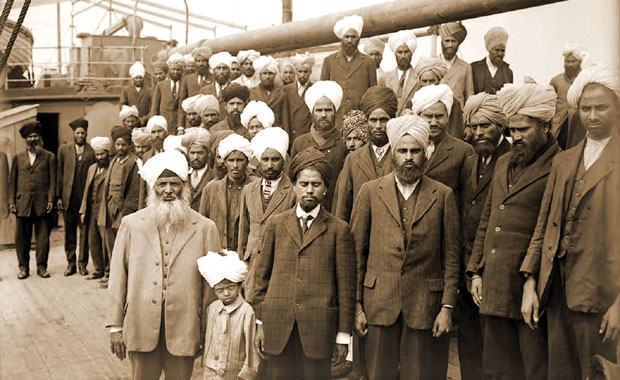Centenary of Komagata Maru Tragedy
The ship that changed the course of Indo-Canadian history
 The Canadian immigration policy was exclusionist, based on race and nationality. Public and political sentiments were racist also. Over 2 million Europeans were welcomed from 1906 to 1915, while the number of Asian immigrants admitted during the same period was only about 50,000. Chinese immigrants had also to pay head tax on arrival, which was increased to $500 in 1904. Japanese government, by a gentleman’s agreement, was limited to issue only 400 passports for their nationals immigrating to Canada. Indians, although British subject like Canadians, were prohibited in 1908 to land in Canada because of the “Continuous Journey” law.
The Canadian immigration policy was exclusionist, based on race and nationality. Public and political sentiments were racist also. Over 2 million Europeans were welcomed from 1906 to 1915, while the number of Asian immigrants admitted during the same period was only about 50,000. Chinese immigrants had also to pay head tax on arrival, which was increased to $500 in 1904. Japanese government, by a gentleman’s agreement, was limited to issue only 400 passports for their nationals immigrating to Canada. Indians, although British subject like Canadians, were prohibited in 1908 to land in Canada because of the “Continuous Journey” law.
Many Indians in Hong Kong, Singapore, Shanghai and other places were keen to come to Canada. But Steamship companies were not allowed to sell tickets to Indians for Canada. An enterprising and resourceful Indian in Singapore, Gurdit Singh, chartered a Japanese vessel Komagata Maru to challenge the racist Canadian law. He obtained clearance from the British Colonial secretary in Hong Kong to sail to Canada. He renamed the ship as Guru Nanak Jahaz in a prayer meeting and left Hong Kong with 165 passengers on April 4, 1914. He got 111 passengers at Shanghai and 85 more passengers joined at Moji, Japan. At Moji, Bhai Balwant Singh, head priest of Vancouver Sikh Temple, who was on a return journey to Vancouver, met with the passengers and explained them the attitude of the Canadian government. At Yokohama, Gyani Bhagwan Singh met with the passengers and told them the story of his deportation from Canada in November, 1913. Maulvi Mohammad Barkatullah, a renowned revolutionary who had lived in New York, also met with the passengers. Both, Bhagwan Singh and Barkatullah, were involved with India Independence Movement, started in America and known as Gadar Movement. They brought latest issue of weekly Gadar magazine and other revolutionary literature for passengers to read. The ship arrived in Vancouver on May 23, 1914 with 376 passengers, all British subjects (340 Sikhs, 24 Muslims and 12 Hindus). British Columbia Premier Richard McBride, one day prior to the arrival of the ship, made statement that the Komagata Maru passengers would not be allowed to disembark. The passengers, however, thought that as British subjects, they had the right to enter Canada. The Canadian public and political sentiments were against Indians getting permission to land. Canadian media in Vancouver was unsympathetic to the arriving passengers. Inflammatory articles in Vancouver newspapers helped to ignite and promote anti-Indian sentiments. The Sun newspaper called the passengers “Hindu Invaders.” Only an Indian newspaper, The Hindustanee welcomed the passengers.











Comments.